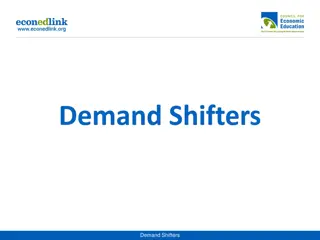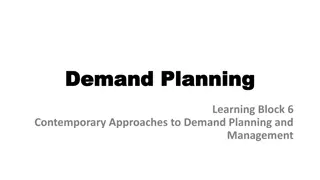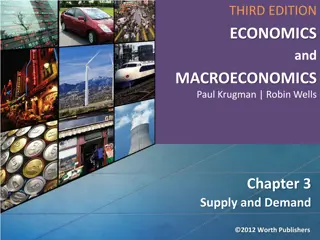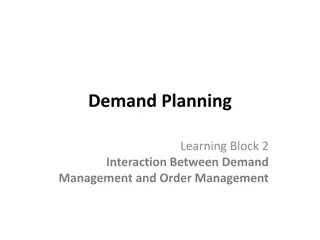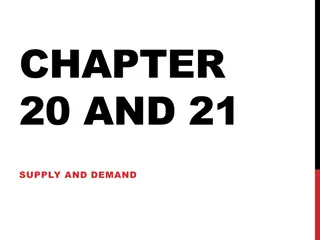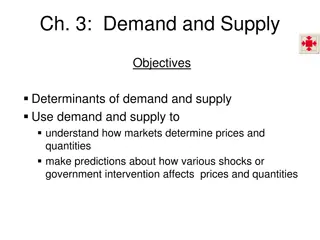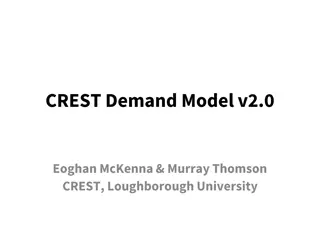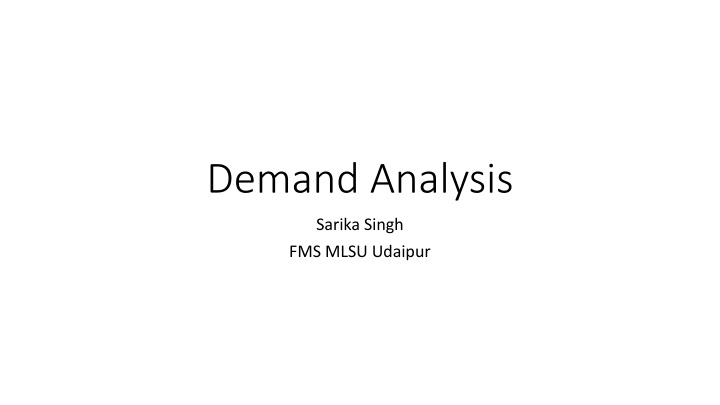
Demand in Economics: Concepts, Types, and Laws
Explore the concept of demand in economics, covering types of demand, determinants, the law of demand, its definitions, assumptions, and exceptions. Learn how consumer preferences, prices, and income influence demand for goods and services.
Download Presentation

Please find below an Image/Link to download the presentation.
The content on the website is provided AS IS for your information and personal use only. It may not be sold, licensed, or shared on other websites without obtaining consent from the author. If you encounter any issues during the download, it is possible that the publisher has removed the file from their server.
You are allowed to download the files provided on this website for personal or commercial use, subject to the condition that they are used lawfully. All files are the property of their respective owners.
The content on the website is provided AS IS for your information and personal use only. It may not be sold, licensed, or shared on other websites without obtaining consent from the author.
E N D
Presentation Transcript
Demand Analysis Sarika Singh FMS MLSU Udaipur
Demand Demand = desire for a product + willingness and ability to pay for it. Demand in economics is the consumer s desire and ability to purchase a good or service. Demand refers to the willingness and ability of consumers to purchase a given quantity of a good or service at a given point in time or over a period of time. According to Benham- The demand for anything, at a given price , is the amount of it, which will be bought per unit of time at that price.
Typesof Demand 1. Direct/Autonomous Demand & Derived Demand 2. Demand for Durable Goods & Non-Durable Goods Demand 3. Short Run Demand & Long-Run Demand 4. Individual Demand & Market Demand 5. Joint Demand & Composite Demand
Determinants of Demand Consumer s income Price of good Price of related goods Consumer s taste and preferences Population Advertisements Credit facilities/discount by sellers.
Law of Demand : Definition According to Marshall, The amount demanded increases with a fall in price and diminishes with a rise in price. According to Samuleson, Law of Demand states that people will buy more at lower prices and buy less at higher prices other things remaning same.
Law of Demand : Definition The law of demand expresses the functional relationship between price and quality demanded. Generally price of a commodity falls the demand for that commodity goes up and vice-versa. It means that there is an inverse relationship between the price and quality demanded. The relationship is known as The law of Demand.
Assumptions of the Law There is no change in income of consumer s. There is no change in quality of product. The price of related commodities remains the same. There is no change in taste and preferences of consumer s. The size of the population remains the same. The climate and weather conditions remains the same. The tax rates remains the same.
Exceptions of the Law Giffen goods/Inferior goods Speculative goods Outdated goods Less supply Costly Luxury goods




